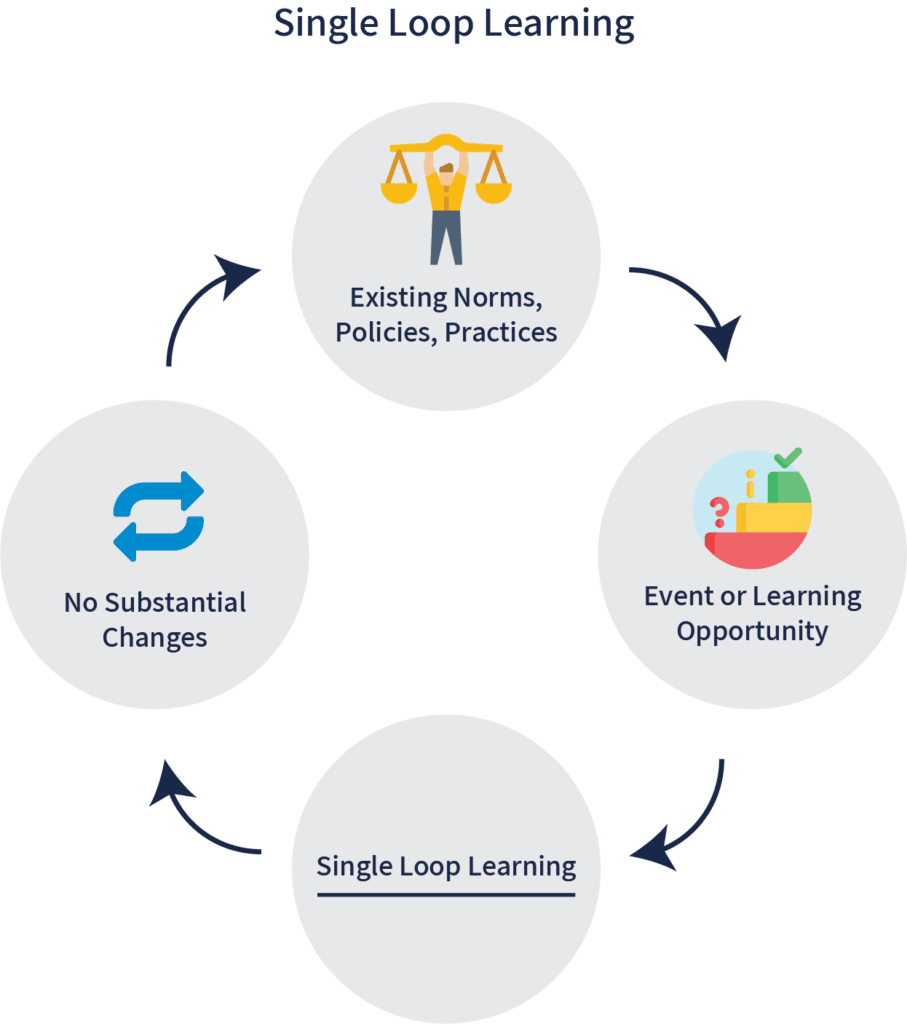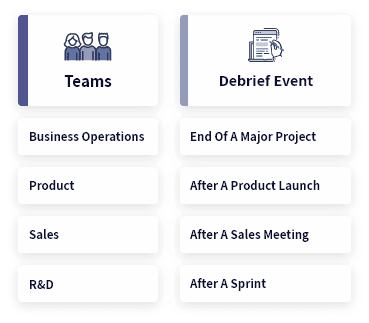This simple continuous improvement tool is what you need to grow while sustaining the culture that got you this far.
What is debriefing and why is it important to your organization?
We all know the importance of good planning to success – cue Benjamin Franklin’s “by failing to prepare, you are preparing to fail”. But what inspirational quotes have been written about reflection? It is equally important, when a project, event, or quarter comes to an end, that we set aside time to reflect and learn. Reflection helps us carry the lessons we learned forward, for use in future projects.
Debriefing is a reflection tool for continuous improvement that constitutes the core of Shamaym’s methodology for building a high performance culture. It is a quick and simple, yet powerful, method for dissecting the successes and errors in your work and identifying ways to act differently in the future. Read on about the origin of this impactful tool, and how implementing debriefing routines in your workflow can improve your organization’s performance.
Where does the debriefing method come from?
To better understand why debriefing is considered such an effective continuous improvement tool across sectors, we’ll take a dive into its theoretical origins.
The roots of the debrief in organizational learning theory
Business theorist Chris Argyris and philosopher Donald Schön introduced the theory of organizational learning in 1978, defining it as the process by which organization members seek to detect and correct errors. They divided learning into two types: single-loop learning and double-loop learning.
- In single-loop learning, lessons learned are incorporated into an organization’s existing norms, policies, and practices.
- In double-loop learning, lessons lead to questioning and even changing norms.
Double-loop learning builds teams that are self-aware and regularly plan, reflect, and adapt. Individuals in such teams operate with transparency and are open to praise or criticism from their teammates, as well as to regular reflection. These characteristics strengthen with the ongoing practice of debriefing.
SINGLE LOOP LEARNING:


Copyright Shamaym Social Business 2020
Debriefing in the Israeli Air Force
The Israeli Air Force (IAF) adapted the practice of debriefing from the British Royal Air Force and refined it over the last 30-odd years. The debriefing methodology aims to instill an actionable, solution-oriented discourse. While debriefing, in some form, exists in various fields (morbidity and mortality in medicine, reflection in education), the IAF’s debriefing model – which constitutes the methodological basis of Shamaym’s debriefing model – is unique in its simplicity to implement. At its core, debriefing in the IAF asks three simple questions:
- What happened?
- Why did it happen?
- What can we learn from this, so that we do it better next time?
Current technology allows flight crews to view data from the flight right after it ends, a process that happens after every flight. As the crew examines the data in a debriefing session, any person involved – from the pilot to the lowest-ranking trainee – is not only allowed, but expected, to speak to and question why events occurred the way they did, what worked, and what could have been done differently.
The goal is to ask hard questions, thus transitioning the team into double-loop learning that enables them to improve when piloting the same flight in the future (there are other key elements of a good debrief – read them below).
DOUBLE LOOP LEARNING W/ DEBRIEFING:
Debriefing allows the IAF to embed a reflexive framework into the military – an organization perhaps the least open to double-loop learning, due to its hierarchical nature and due to the fact that decisions often need to be made impulsively in high-stress situations. And yet, the fact that debriefing has become a core part of its organizational DNA speaks to the effectiveness of this tool and its potential power in the business and social impact sectors.
The many benefits of debriefing
Regular debriefing sessions can shift the mindset of individuals and teams, catalyze culture change, and even lead to growth in your bottom line. Just some of the benefits of debriefing include:
- Improves individual, team, and organizational performance – plain and proven.
- Sparks creative ideas for improvement that may have otherwise remained unspoken.
- Contributes to the development of a deep-rooted organizational culture and DNA.
- Enables a regular opportunity for recognition and reward of good work.
- Encourages a safe environment where individuals take responsibility for their actions, and simultaneously..
- Builds resilience – team members learn to endure the discomfort of publicly admitting fault.

So… how do we do this?
Characteristics of an effective debrief session
It is not enough to simply conduct a debrief; to be effective, it has to be done correctly. While you’ll find a variety of event debrief questions, all good debriefs share the following characteristics:
- Active participation by all individuals involved in the event being debriefed
- Naming of what worked well in addition to what went wrong
- An open, democractic discussion, in which all team members get a say regardless of seniority
- Challenges to existing policies and assumptions
- A clear and specific plan for adaptation of lessons learned into future workflows
- Objectivity in regard to the debriefed event
We believe in three additional characteristics that are unique to Shamaym’s debriefs:
- The debrief is short and focused, and takes place as close as possible to the event being debriefed. This allows the practice of debriefing to integrate into existing workflows.
- The debrief is rooted in personal responsibility – team members only speak to matters that are within their control, because it is those matters they have the power to change.
- Lessons are actionable, so that they lead to tangible culture change.
Who debriefs and when?
We’ve mentioned that all team members who are involved in the event being debriefed should be present at the debrief meeting, regardless of their level of seniority. Debriefs that lead to culture change rest on the premise that everyone on the team has valuable insight to contribute. That said, the debrief should have a defined leader, usually the person accountable for the event being debriefed – a project manager, sales leader, or executive.
The question of when to debrief is more fluid. There is no set guideline on this; debriefing can take place at the end of any activity or project. For a debrief event to contribute to learning, growth, and culture change, it needs to happen around a significant enough event. This will mean different things for different teams, for example:

Debriefing sustains what works and improves what doesn’t
Debriefing is a powerful continuous improvement tool that creates a structure in our existing workflows to review what’s working well and improve on what is not. Looking for support in embedding a high performance culture based on debriefing and continuous improvement in your organization? Please reach out, we’d love to be your partner.
———————–
Sources:
Argyris, C., & Schon, D. (1978). Organizational learning: A theory of action perspective, Reading, MA: Addison Wesley
Swift, T. A., & West, M. A. (1998). Reflexivity and group processes: Research and practice. University of Sheffield, Sheffield, UK.
Lipshitz, R., Ron, N., & Popper, M. (2002). Sensemaking when accuracy matters: Post flight reviews in the Israeli Defense Force Air Force. Paper presented at “Probing the future: Developing organizational foresight in the knowledge economy,” University of Stathclyde Graduate School of Business, Glasgow, U.K.
